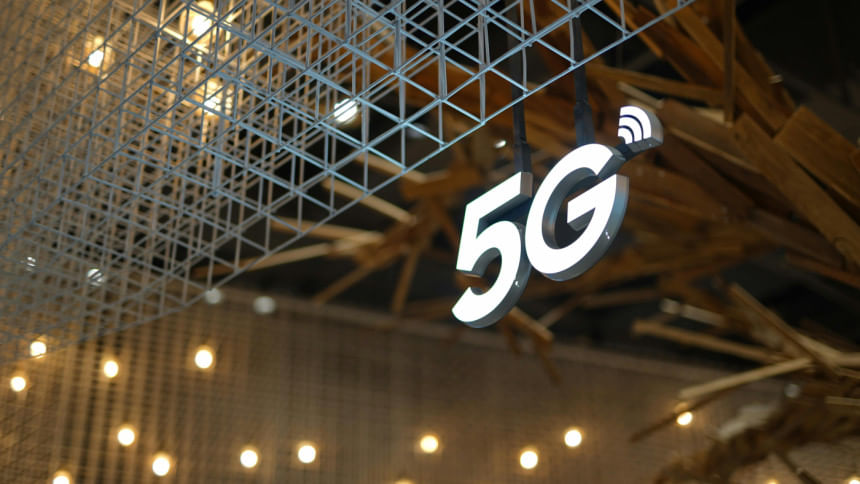5G: What it is, how it differs from 4G, and where the world stands

Bangladesh has entered the 5G era with limited commercial switch-ons by Robi Axiata and Grameenphone. Robi activated sites in parts of Dhaka, Chattogram and Sylhet, while Grameenphone said its service is live in all divisional headquarters, though early user reports suggest coverage remains patchy and will expand in phases. The move follows the country's March 2022 spectrum auction, in which operators bought 190 MHz for about $1.23 billion.
How 5G is different from 4G
Fifth-generation mobile networks are designed to deliver much more capacity, higher peak and typical data rates, and markedly lower latency than 4G. International technical standards for 5G (IMT-2020) set targets of up to 20 Gbps peak downlink, 10 Gbps uplink and as low as 1 millisecond over-the-air latency under ideal conditions. Those figures are laboratory-grade targets rather than everyday speeds, but they capture the step-change in capability that underpins applications such as cloud gaming, time-critical industrial control and high-density IoT.
In real-world use, 5G typically produces substantially faster downloads and snappier responsiveness than 4G because operators combine more spectrum with technologies such as massive MIMO and network slicing. Consumer regulators and industry measurements consistently point to lower latency and higher bandwidth on 5G, while acknowledging that performance varies with coverage, spectrum and device support. Early deployments can feel similar to strong 4G in some locations, but well-built 5G sites commonly deliver median speeds in the hundreds of megabits per second.
For Bangladesh, the immediate gains will be faster mobile broadband where 5G cells are live and compatible handsets are present. The longer-term potential lies in dedicated "slices" for industries, smarter ports and logistics, private 5G for factories, and ultra-reliable low-latency links for healthcare and utilities—once standalone 5G cores, compatible devices and business models are in place.m
How popular 5G is in other countries
Globally, 5G adoption is broad and accelerating. Ericsson's latest mobility outlook indicates roughly 2.4 billion 5G subscriptions in the first quarter of 2025, with a forecast of almost 2.9 billion by the end of 2025 as more users and networks migrate from 4G.
The United States has nationwide 5G from all major operators; T-Mobile says its network now reaches about 98% of Americans, underpinned by a large mid-band footprint that has lifted typical speeds in independent tests.
China has built the world's largest 5G footprint, with authorities reporting about 4.4 million 5G base stations by April 2025 and an ongoing push into 5G-Advanced across hundreds of cities.
South Korea, an early 5G pioneer, remains near the top of global rankings for infrastructure and adoption, with around 30 million 5G subscriptions—over two-fifths of mobile lines—by early 2025, according to figures cited by industry and government.
Across South Asia, the picture is mixed. India launched commercial 5G on 1 October 2022 and, by March 2025, had around 250 million active 5G users and roughly 469,000 base stations, reflecting one of the fastest 5G scale-ups globally. Bhutan and the Maldives have also rolled out commercial 5G in selected areas since 2021 and 2019 respectively. Nepal and Sri Lanka have run extended trials; Sri Lanka is preparing a spectrum auction with nationwide rollout targeted by the end of 2025, and Pakistan is working toward a commercial launch now expected in 2026.
What this means for Bangladesh
The immediate rollout here is intentionally limited, so day-one experiences will depend on where you are and whether your handset supports the right bands. As operators add sites and migrate to full standalone 5G cores, the benefits should widen from faster streaming and smoother multiplayer gaming to industrial connectivity for ports, logistics and manufacturing, and smarter public services in health and education.
The BTRC's auction in 2022 secured the core spectrum needed; from here, the pace of tower build-out, device affordability and enterprise demand will determine how quickly 5G shifts from showcase to everyday utility.

 For all latest news, follow The Daily Star's Google News channel.
For all latest news, follow The Daily Star's Google News channel. 



Comments